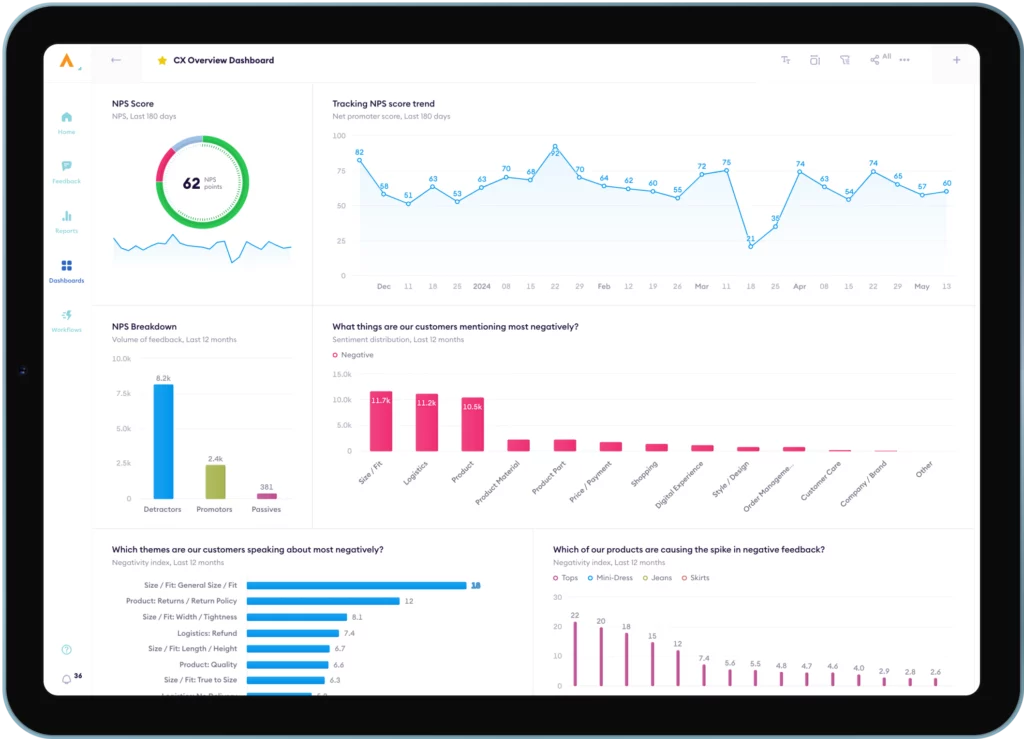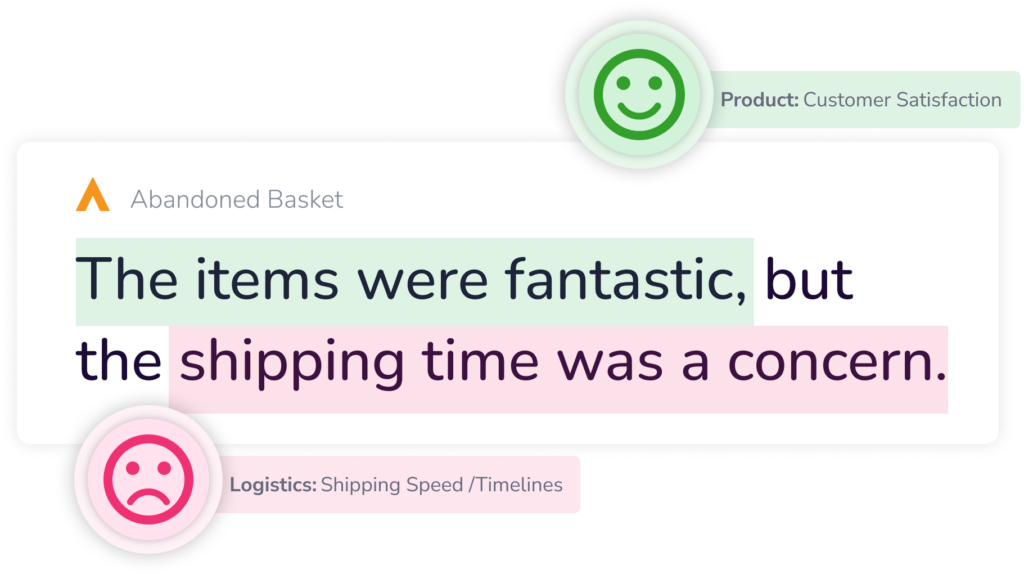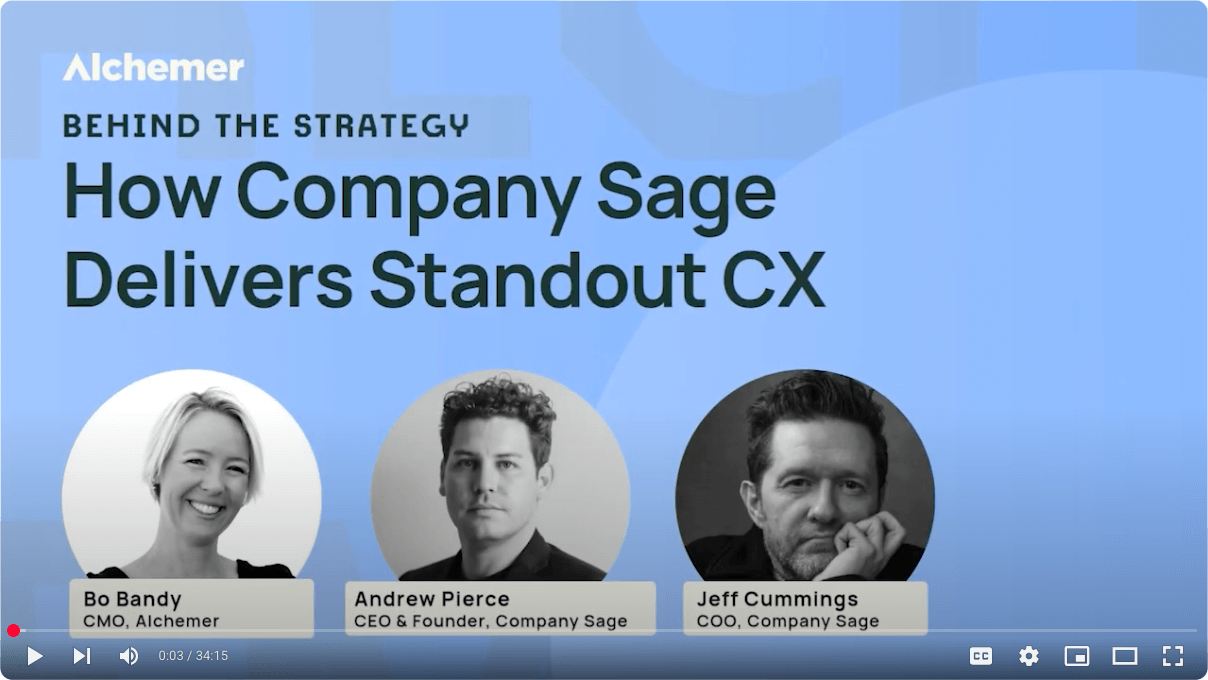“The aim of marketing is to know and understand the customer so well that the product or service fits them and sells itself.” – Peter Drucker, founder of Drucker Institute
For marketers, success depends heavily on a deep understanding of their target audience. As the key drivers behind brand positioning and engagement, marketers face the ongoing challenge of interpreting and addressing the evolving needs and preferences of their customer base.
They need to discover:
- What aspects of our brand or messaging resonate with customers, and what falls flat?
- What additional content or promotions are customers eager for?
- How do customers incorporate our brand into their everyday lives?
- What patterns emerge in customer feedback and sentiment over time?
- What drives customers to choose our brand over the competition?
- What strategies or improvements will make the most significant impact on customer loyalty?
- What are customers looking for in a loyalty program?
Marketers with the insights necessary to regularly answer these questions are truly customer obsessed.
In this post, we dive into the fundamentals of customer obsession for marketers. We’ll define what it means to be customer-focused, explain why this mindset is essential for success, and outline the steps needed to keep the customer at the heart of everything you do.
For marketers, what does it mean to be customer-obsessed?
Being customer-obsessed means putting the customer’s wants and needs at the center of every marketing interaction. This approach involves listening to your customers, analyzing the feedback provided, and using insights to improve and personalize the marketing actions you take.
Customer-obsessed marketers DO:
- Consistently Strive for a Deeper Customer Understanding:
- Regularly gather and analyze customer data from various sources, including surveys (traditional and in-app) and review sites.
- Segment your customer base so that you can dive deeper into sentiment and specific aspects of the customer journey.
- Personalize Every Marketing Interaction:
- Use customer data and previous survey responses to tailor content, offers, and recommendations at an individual level.
- Implement dynamic content and personalized campaigns that are tied to specific customer needs and preferences.
- Constantly Monitor Customer Sentiment:
- Track and analyze feedback from social media, review sites, and customer surveys to stay updated on how your brand is being perceived.
- Use sentiment analysis tools to gauge overall customer feelings and identify emerging trends.
Customer-obsessed marketers DON’T:
- Make Assumptions Without Data:
- Avoid relying on gut feelings or anecdotal evidence. Base decisions on actual customer data and research.
- Resist the temptation to implement strategies based on internal opinions without validating them through customer feedback.
- Overlook The Importance of Open-Text Feedback
- Don’t ignore the value of open-text feedback from surveys, reviews, and social media comments. These qualitative insights often reveal deeper, nuanced customer sentiments that quantitative data alone might miss.
- Regularly review and analyze open-text responses to uncover trends, identify pain points, and gather actionable insights.
- Ignore Emerging Trends and Technologies
- Embrace new tools and platforms that enhance your ability to collect, analyze, and act on customer feedback.
By focusing on these principles, marketers can create deeper, more impactful connections with their customers, driving continued engagement and loyalty.
The three keys to customer-obsession for marketers:
1. Understand the customer journey better than anyone
By charting out how people interact with your brand at every touchpoint, marketers uncover key insights into customer behavior and preferences. This understanding allows you to be more customer-obsessed, tailoring every interaction to meet customer needs and expectations.
With detailed feedback on customer journeys, marketers can put themselves on the path to delivering highly relevant content and information precisely when and where customers need it.
However, marketers don’t go from feedback collection to personalized action overnight. How do you get this feedback?
Surveys, customer reviews, and social media comments provide a treasure trove of open-text feedback about your brand, customer experience, and the complete customer journey.
Once you collect feedback through these channels, it’s unlikely that your path to action will be readily apparent. And that brings us to the next key point, what do you do with the unstructured feedback collected?
2. Immerse yourself in the unstructured feedback your customers provide
It may seem obvious, but far too many marketing teams collect customer feedback and then let it sit. The first step to leveraging feedback as fuel for your business is to analyze it critically and immerse yourself in the overall sentiments and themes across your feedback channels.
Every business’s approach to analyzing feedback varies. But regardless of your approach, the feedback you collect is only as good as the tools you use to analyze it.
Thankfully, marketers no longer need a data science degree to get the most out of customer feedback. New advancements in AI-powered open-text analytics, allow marketers to turn noisy or disjointed text feedback into deep customer insights, and quickly!

By harnessing these technologies, marketers can quickly identify patterns, uncover hidden sentiments, and gain a deeper understanding of customer needs, enabling them to act on feedback more effectively and strategically.
3. Make personalization the expectation
After collecting feedback and taking the time to conduct analysis, it’s time for action. As marketers, leverage feedback data to create customized interactions that resonate with everyone, making them feel valued and understood.
Customers now expect brands to deliver tailored experiences based on their preferences and behaviors.
What does acting on customer feedback look like?
FanDuel
FanDuel used mobile sentiment data, collected via Alchemer, to refine their Refer-a-Friend program, resulting in a 20% increase in new app activations and a 3x higher click-through rate compared to traditional email marketing. By enriching customer profiles with customer sentiment insights, they effectively targeted their most engaged users across multiple channels.
WeatherBug
WeatherBug used Alchemer to gather over 1,400 customer stories in just 24 hours for a new marketing campaign. By targeting satisfied users of their Spark feature, they efficiently identified and solicited real customer experiences from their happiest customers, resulting in a powerful video campaign and valuable insights into regional usage trends.
What are the benefits of customer obsession for marketers?
Better, more actionable insights
A customer-obsessed approach delivers insights that are not only richer but also more actionable. By continuously gathering and analyzing customer feedback, marketers can identify precise pain points, preferences, and trends. This information allows marketers to tailor their strategies with greater accuracy, optimize campaigns, and make better-informed decisions that resonate with their target audience.
Improved brand reputation
Focusing on customer needs enhances brand reputation by ensuring that marketing efforts align with customer expectations. When brands actively listen to and act on feedback, they demonstrate their commitment to customer satisfaction and providing value. This responsiveness can lead to improved public perception, increased trust, and stronger brand loyalty, ultimately contributing to a more positive and robust brand image.
A new era of customer-obsession for marketers
Advancements in artificial intelligence and natural language processing are driving a new era of customer-obsession. AI-driven feedback analysis tools, like Alchemer Pulse, can dissect vast quantities of open text feedback at scale and derive nuanced insights and themes from that feedback. What used to take weeks of manual analysis can now be done in a matter of hours and to a higher degree of accuracy than ever before.

In this era of new technologies and higher customer expectations, there is no excuse for marketers to not strive for customer-obsession!
If you are ready to turn customer-obsession into business impact, Alchemer is here to help and we’d love to chat, request a demo today!
Not quite ready for a demo? That’s ok too! Here are some additional resources:
- Customer Stories – See how our customers have used Alchemer to elevate their marketing programs.
- Alchemer Pulse – Learn how our AI text analytics solution uncovers hidden customer insights and transforms those insights into business impact.
- Integrations – Check out Alchemer’s dozens of prebuilt integrations. If you don’t see an integration that you need, don’t sweat it! Our low-code design and architecture allow teams to seamlessly connect Alchemer to almost any platform using our API.




